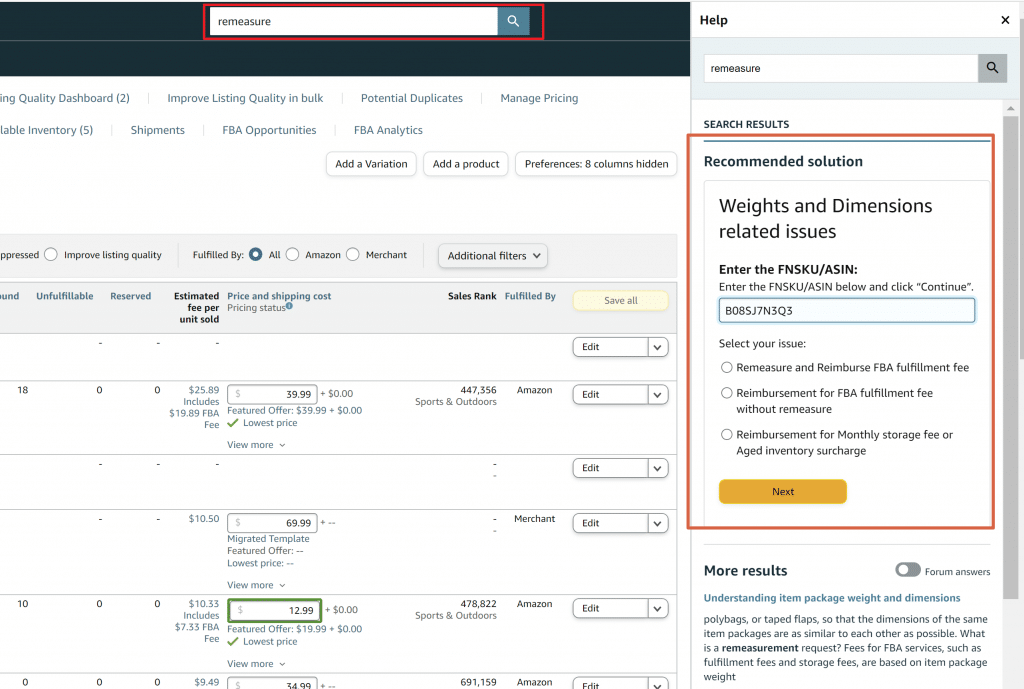How to Reduce Amazon FBA Fees: 10 Effective Strategies

Amazon's FBA (Fulfillment By Amazon) program is a boon for e-commerce sellers, but the associated fees can quickly eat into your profits.
Without a clear understanding and strategic approach, you might find yourself overpaying and consequently decreasing your profit margins.
Fortunately, with a few tweaks, understanding, and proactive measures, you can reduce FBA fees and optimize your Amazon business for profitability.
In this article, we’ll look at several effective strategies to help you reduce Amazon FBA fees.
What Are Amazon FBA Fees?
These fees are those that are charged to third-party sellers for using FBA (Fulfillment By Amazon). FBA is a service where Amazon stores, picks, packs, and ships products on behalf of sellers.
There are different costs involved, including the following:
| Fulfillment Fees | These cover the costs of picking, packing, and shipping the products. |
| Storage Fees | These are charged based on the volume (in cubic feet) of space an item occupies in Amazon's fulfillment centers. |
| Referral Fees | For every item sold, Amazon charges a referral fee, which is a percentage of the total sales price (including any shipping or gift wrap charges). |
| Removal Fees | If a seller wants to remove their inventory from Amazon's fulfillment center, whether due to slow sales, excess stock, or any other reason, they'll incur a removal fee. The fee is charged per item removed and varies based on the size and weight of the product. |
| Returns Processing Fee | For items in categories where Amazon offers free returns to customers if a customer returns a product, a returns processing fee will be levied. |
| Unplanned Service Fees | These fees are charged when products arrive at Amazon's fulfillment centers without being properly prepared or labeled. |
| Subscription Fee | If you're on the Professional selling plan, you'll also pay a monthly subscription fee. This fee remains constant regardless of how many items you sell, making it suitable for high-volume sellers. |
Related reading: Amazon Selling Fees and FBA Fees
10 Strategies to Reduce FBA Fees
Here are ten strategies to help you minimize costs without sacrificing quality.
1. Ensure Accurate Product Dimensions
Amazon's FBA fees are highly contingent on the recorded dimensions and weight of your products. Provide accurate data to avoid arny unwarranted or excessive fees.
Here's how to check your items' dimensions: Search for “remeasure” and use the dialog below.

2. Optimize Products with “Borderline” Sizes and Weights
Products falling on the cusp of two different FBA fee tiers may be candidates for cost savings. By making minor adjustments to the product’s dimensions or weight, you may be able to place it into a lower fee tier. The biggest savings will come if you can get your product from an oversize product to a standard size. Now obviously if you're selling rooftop tents you're probably not going to be able to squeeze it into an envelope, but if you have a product that is just over 18″ (the oversize threshold) you might be able to shave a quarter of an inch and get it down to standard size.
Check the weight and dimensions of your product carefully to determine if they can be reduced slightly. Make incremental changes, like reducing the thickness of the packaging material or using lighter components, without compromising the quality of the product.
3. Audit Your FBA Seller Fees and File Claims
Even with Amazon's “sophisticated” systems, billing errors occur (and more frequently than they probably should).
I'll give you an example – last year we discovered one of our air mattresses being billed as a “kindle accessory” with a whopping 45% referral fee instead of 15%!
To ensure that you're not paying more than necessary, you should make it a practice to periodically scrutinize their FBA bills. This involves going through each fee meticulously and searching for discrepancies or billing errors. If a seller identifies an oversight, the next step is to promptly contact Amazon's Seller Support to file a claim. For best practices, maintaining a regular audit schedule, perhaps on a monthly cycle, can be beneficial.
Moreover, keeping thorough records of all claims and communications with Amazon provides a reliable reference if issues resurface in the future.
You can also use tools like GETIDA (affiliate link) to take care of your reimbursements. The link provided gets you your first $400 worth of reimbursement for free.
4. Prep in Advance
Sellers should be wary of Amazon's “unplanned service fees.” These arise when items sent to the FBA centers require additional preparation before they can be listed for sale. Given that these fees can accumulate, it's crucial for sellers to be proactive.
To mitigate these costs, you should be familiar with Amazon’s specific packaging and prep requirements. Before shipping any product to Amazon's fulfillment centers, ensure every item is correctly labeled and adequately packed according to Amazon's stipulations.
To streamline this process and ensure accuracy, most sellers have two prominent strategies:
5. Manage Unfulfillable Inventory
Unfulfillable inventory can be a silent drain on your resources. These are items that, due to damage or returns, can't be sold. However, they continue to occupy warehouse space, resulting in ongoing storage fees.
This is why you need to regularly review their Inventory Health Report, available on Seller Central. This report highlights any unfulfillable items in the inventory. Upon identification, sellers should promptly decide on the next course of action: Either dispose of these items or have them returned.
To maintain a healthy inventory and minimize fees, you can adopt a couple of strategies. One is to implement automated inventory removals ensures that unsellable items are routinely addressed. You can also integrate routine checks for unfulfillable items into weekly or monthly operational practices to keep the inventory in optimal shape.
Related reading: 11 Amazon Seller Metrics that are Critical to Success in Ecommerce
6. Understand Long-Term Storage Fees
Items that linger in Amazon warehouses, especially for more than six months, can incur significant long-term storage fees.
To combat these additional costs, use Amazon Warehousing and Distribution (AWD). This program offers third-party sellers reduced fees for long-term storage, and the rates remain constant throughout the year, including peak season.
You should also consistently monitor the age of their inventory using the Inventory Age report within Seller Central. For items nearing the six-month threshold, consider developing strategies to either sell them faster, reposition them, or even remove them from the warehouse.
It's also beneficial to anticipate the demand for seasonal items to avoid overstocking.
Regular monthly check-ins on inventory age can help you sidestep those looming long-term storage charges.
7. Benefit from Amazon’s Referral Fee Discounts
Every so often, Amazon treats its sellers to referral fee promotions, offering a reduced fee on select products.
To take full advantage of these potential savings, you should remain vigilant by consistently checking Seller Central announcements for any upcoming promotions. And if a product qualifies, consider tweaking its price to stay competitive.
By employing tools or browser alerts that notify you of changes to the Amazon Seller Central announcements page, and by being ready to adjust your strategies swiftly, you can optimize these short-lived, yet lucrative promotions.
9. Minimize Returns and Damages
The repercussions of returns and damaged goods are twofold: they dent your sales and can result in added fees.
It's important for sellers to guarantee that every product dispatched to Amazon is in impeccable shape. This can be achieved by investing in top-notch packaging that shields items from potential transit damage.
To further minimize return rates, it's prudent to scan customer feedback. You can get helpful data for this from the Voice of the Customer page on Seller Central. This shows you your Customer Experience (CX) Health, which “a metric that helps you understand your offers performance relative to similar offers, based on your recent orders and customer feedback about your products.”

10. Analyze Reports to Spot Trends
Amazon bestows upon its sellers an arsenal of intricate reports, a treasure trove of insights encompassing sales trends, inventory turnover, and other vital metrics.
For those who take the time to dive deep into these, the rewards can be substantial.
Setting aside regular intervals, be it weekly or monthly, to pore over these reports can offer invaluable insights.
The trick lies in harnessing this data to fine-tune selling strategies, adjust pricing, and recalibrate inventory levels.
To further enrich this analysis, sellers might explore third-party analytics tools, offering a deeper dive into the data, and ultimately guiding more informed, strategic decisions.
Wrapping Up
Navigating the complexities of Amazon's FBA fees can be overwhelming, especially when you're focused on growing your business. Don’t worry—you're not alone.
Many sellers face the same challenges, and it's entirely possible to turn those obstacles into opportunities for savings and efficiency.
Remember, the goal is not just to cut costs, but to optimize your operations in a way that allows you to invest back into your business.
By employing these strategies, you're taking proactive steps to control your FBA fees and, ultimately, boost your bottom line.
So, take a deep breath, roll up your sleeves, and put these tips into action. Your business—and your wallet—will thank you.



